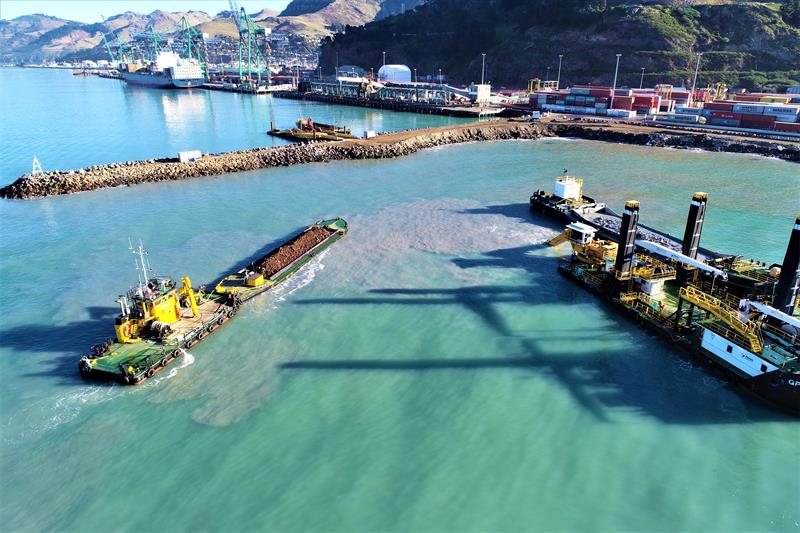
Marine Biosecurity: Commercial dredging company an early adopter of marine biosecurity protocols
by Clean Below? Good to Go 18 Nov 2021 17:34 NZDT
18 November 2021

Heron barges working on projects in Lyttleton © Heron Construction Company
The Heron Construction Company is a commercial vessel operator that takes marine biosecurity seriously. It goes to great efforts to keep its barges, tugs and dredgers clean when they move up and down the country to build and maintain ports, wharves and marinas.
Heron recognised that marine biosecurity was going to be influential in its business operations earlier than many.
Marine Manager Warren Harris recalls, “We move around quite a bit with our gear, to different ports. We wanted to be compliant, and to tick the boxes.”
Heron got involved in 2018 by providing feedback to government departments on proposals to help make sure they were workable for the marine industry to implement. The company introduced its own comprehensive biofouling management plans in 2018.
Thanks to the early start, it’s now a normal part of operations for the business to have an underwater hull inspection and a cleanliness certificate issued for all its vessels, before they move from port to port.
Heron has an overarching Biofouling Management Plan to document its policy and processes, a Biofouling Management Plan for each vessel, and also a Vessel Record Book for each vessel.
To prevent biofouling, Heron vessels use a high end antifoul system and are routinely hauled out every 2.5 years, and surveyed in between times by divers. Underwater inspection reports, where hull, fittings, niches and voids are all inspected and photographed by divers – and cleaned when required, with detailed records kept. Records are also kept when the vessels are laid up in the water for any period of time – because this allows biofouling to accumulate.
Warren does believe there is still work to do in terms of making rules more consistent - not only between regions but also between countries – and also boosting up cleaning facilities.
He says that while a Heron vessel will always arrive at a site, such as a port, clean, it can spend months in one location, picking up marine growth in niche areas. Often, in water cleaning is not permitted, and finding a way to clean the vessel can be challenging. He’d like to see more suitable infrastructure for vessel operators trying to arrange cleaning – something that councils and waterfront infrastructure operators are also addressing through the establishment of new facilities and investigating other options in some regions. Many regional councils are also involved with the Marine Biosecurity Toolbox, a research program working to come up with new practicable solutions to assist boaties (and marinas) to help keep their boats/structures clean.
The team at Clean Below? Good to Go says good job, Heron Construction Company. Your efforts for demonstrating conscious biosecurity efforts that make great business sense, as well as helping New Zealand in the war against marine pests.